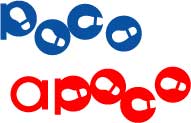 I don’t remember much about Toshiba’s entrance ceremony. As many as 630 new employees came from national universities in each prefecture, such as the University of Tokyo and Kyoto University. In addition to Waseda and Keio, there were many new employees from famous private universities. I entered the Hiyoshi Dormitory in Yokohama. Since I joined Toshiba, I was impressed to be able to talk with excellent people from all over Japan.
I don’t remember much about Toshiba’s entrance ceremony. As many as 630 new employees came from national universities in each prefecture, such as the University of Tokyo and Kyoto University. In addition to Waseda and Keio, there were many new employees from famous private universities. I entered the Hiyoshi Dormitory in Yokohama. Since I joined Toshiba, I was impressed to be able to talk with excellent people from all over Japan.
After three months of training, I made a request for the Medical Devices Division and was assigned to the Tamagawa Factory in Mizonokuchi, Kawasaki City. There was also two months of training there. The final assignment department and section have been decided. Since I graduated from the Department of Physics, I was assigned to the Department of Treatment Equipment. However, I honestly offered to the chief engineer that I was not so confident. The chief engineer had a flexible mindset, so he reassigned me to the computer department. And I agreed.
The factory at that time was a tough place, and the person in charge received more and more product development requests. In response to the request, I could not say that I could not do it. Therefore, those design issues had to be solved by myself. I have never seen an electronic circuit in university. However, the seniors around me entered their world and struggled. Stay in the lab if necessary. At that time, it was time to switch from semiconductors to ICs for integrated circuits, and I remember that senior engineers were also going back and forth. There were five electronic circuit designers in my department.
One is a graduate of Waseda University’s Faculty of Electronic Engineering, one is a graduate of Keio University’s Master’s Program in Chemistry, one is a graduate of Tohoku University’s Faculty of Electronic Engineering, one is a graduate of Yokohama National University’s Department of Chemistry, and the other is a biological graduate of Osaka University. Everyone had their own responsibilities, they didn’t help their neighbors, and they didn’t talk too much about the designs of others. Since I was a new employee, a Waseda graduate became my tutor and consultant. I had to study electronic circuits from the very basics. Every Saturday and Sunday, I went to Kinokuniya Bookstore in Shinjuku, searched for a good electronic circuit design book, and studied at a coffee shop.
And at the factory, I stayed in the laboratory. I was desperate at this time. Then, six months later, he was dispatched to Toshiba’s Ome factory for computer training. Fortunately, at the Ome Factory, I was able to thoroughly study the basics of computers. This training gradually gave me confidence.
At that time, it was common sense that it would take three days to make a diagnosis at the human dock. However, the number of people who could be hospitalized for three days was limited.
Therefore, in order to make a system that can complete the human dock in one day by utilizing a computer, it is necessary to build a system that immediately sends inspection data to the computer and analyzes it.
And six of us have been asked to develop the hardware field of the system.
Naturally, there were more than 30 software development staff.
There were many electronic circuit drawings on my desk, and even on vacation, I was chasing the electronic circuit drawings in my head.
However, one day, Mr. Wakamatsu, a graduate of the Department of Biology, Osaka University, who was one year older than me, spoke to me.
“Mr. Sato, why don’t you go abroad for a year?”





